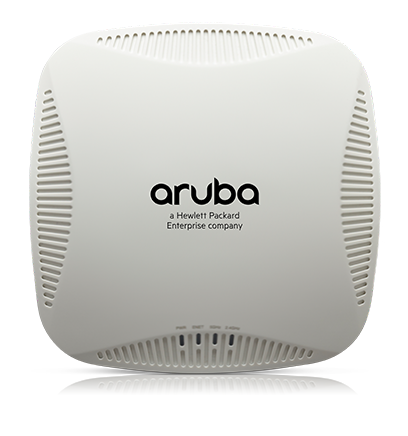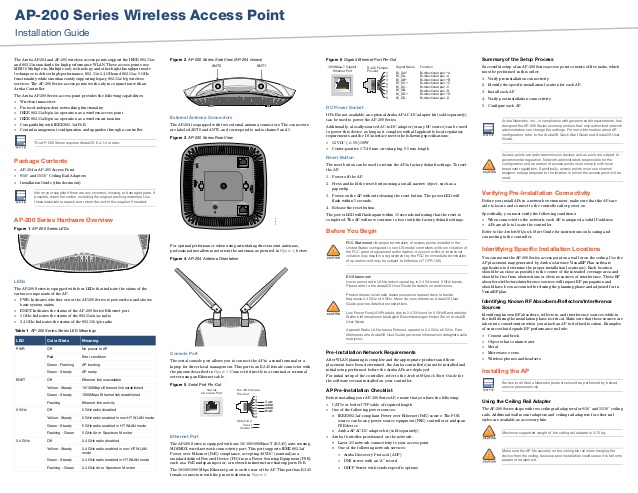
Problems that solves
Non-compliant with IT security requirements
Low employee productivity
Low bandwidth data channels
Values
Enhance Staff Productivity
Ensure Security and Business Continuity
Ensure Compliance
Aruba 200 Series Access Points
Multifunctional and affordable Aruba 200 series 802.11ac wireless APs maximize mobile device performance in medium-density enterprise Wi-Fi environments.
About Product
Description
These compact and cost-effective dual-radio APs deliver wireless data rates of up to 867 Mbps to 5-GHz devices with 802.11ac technology leveraging two spatial MIMO streams while simultaneously supporting 2.4-GHz 802.11n clients with data rates of up to 300 Mbps.
The AP-205 and IAP-205 models feature four integrated omnidirectional downtilt antennas, while the AP-204 and IAP-204 support external detachable dual-band antennas using two RP-SMA antenna connectors. UNIQUE BENEFITS
Wi-Fi client optimization
The AP-205 and IAP-205 models feature four integrated omnidirectional downtilt antennas, while the AP-204 and IAP-204 support external detachable dual-band antennas using two RP-SMA antenna connectors. UNIQUE BENEFITS
Wi-Fi client optimization
- To eliminate sticky client behavior while users roam, 200 series APs feature patented ClientMatch technology, which continuously gathers session performance metrics from mobile devices.
- If a mobile device moves away from an AP or if RF interference impedes performance, ClientMatch automatically steers the device to a better AP.
- ACC lets WLANs perform at peak efficiency by minimizing interference from 3G/4G LTE networks, distributed antenna systems and commercial small cell/femtocell equipment.
- The 200 series APs support priority handling and policy enforcement for unified communication apps, including Microsoft Lync with encrypted videoconferencing, voice, chat and desktop sharing.
Scheme of work

User features
Roles of Interested Employees
Chief Executive Officer
Chief Information Officer
Chief Technical Officer
Chief IT Security Officer
IT Security and Risk Management
Organizational Features
Mobile users
Internet access is available for employees
GDPR Compliance